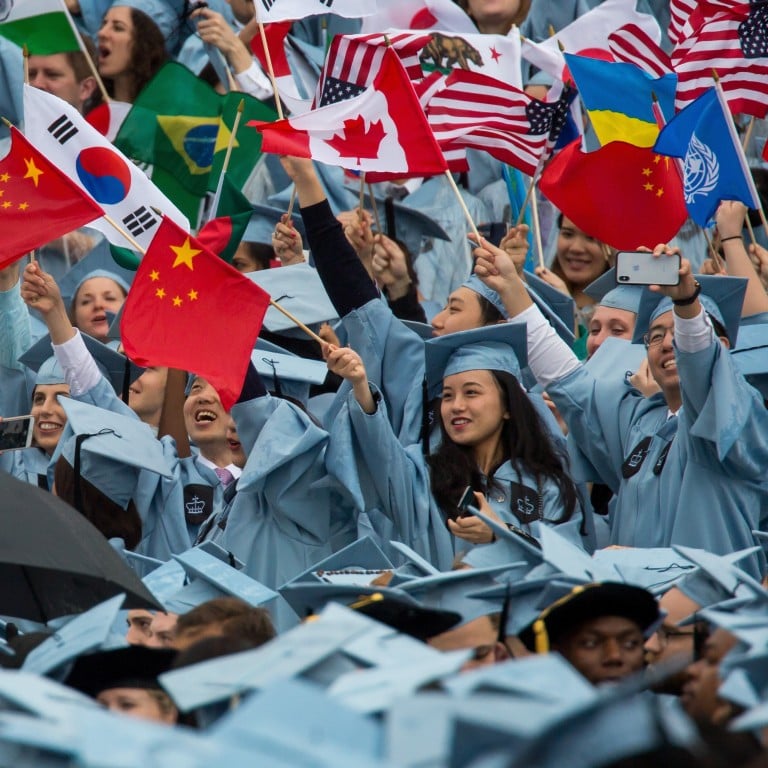
What Chinese students in the US think about their institutes and themselves: Yingyi Ma’s attempt to explain is of best use for the educators
- ‘Ambitious and Anxious’ will come as little surprise to those who have studied overseas, and is best for those who still see Chinese students as a puzzle
- Ma makes some prescriptions such as recommending that more efforts be made to integrate Chinese students into American university social life
Ambitious and Anxious: How Chinese College Students Succeed and Struggle in American Higher Education, by Yingyi Ma, Columbia University Press, 4/5 stars
Yingyi Ma’s new study, based on data collected mostly in what were the halcyon days of 2013-16, does not deal with these issues. But it attempts to explain what Chinese students in the US think about themselves and their journey, and might inform the rising debate.
The title gives away the conclusion: they are ambitious and anxious, something one might have guessed without survey data. It takes considerable get up and go to take oneself off for several years to a foreign country, culture, language and educational system. If American undergraduates suffer from anxiety, it is hardly surprising that Chinese students do as well.
Little in Ambitious and Anxious will come as a surprise to those of us in East Asia who have either been through this, have friends who have, or who have read the great many stories, op-eds and profiles that appear in the regional press. Ma’s study will be of most use to educators – professors and administrators – who perhaps find their Chinese charges a bit of a puzzle.

But a foreign degree is considered by many as a status symbol and, in a perhaps self-fulfilling feedback loop, a ticket to a better life. We are seeing the globalisation of higher education.
Hong Kong students have long gone to Britain and it was just assumed that the best students, except perhaps those destined for law or medicine, would head to Britain – with Canada, Australia and New Zealand making up for a shortage of university places in Hong Kong itself. The US was normally considered relatively expensive.
It was only in 2014, notes Ma in one of many charts, that the number of Chinese undergraduates in the US overtook that of graduate students, the rationale and financials for whom were different. And despite the reported cooling in demand as a result of changing US policy, all that has happened is that the rate of growth has slowed, although Britain has reportedly as a consequence seen a surge in Chinese demand for university places.

Ma’s methodology – a combination of online surveys and a few dozen interviews – is, as she notes, subject to sampling bias. Yet what comes across is how normal the kids seem.
Ma takes aim at some other misconceptions as well, for example, that exposure to the United States and an American education turns Chinese students into evangelists for American liberalism and democracy. On the contrary, and perhaps ironically, she quotes students as saying that American liberal arts courses on various aspects of Chinese history and culture helped them understand and appreciate their country better.

Ma also makes some prescriptions, such as recommending that more efforts be made to integrate Chinese students into American university social life. One arcane, but probably quite effective, example is the University of Illinois at Urbana Champaign’s launching of Chinese-language broadcasts of its home American football games.
Some of her recommendations are based on the assumption, which she never questions, that large numbers of Chinese students (or international students in general) are a good thing overall. Admissions leaders and officers do not fully recognise that there is a mismatch between the holistic admissions system in the United States and the test-based system in China, which creates a massive void for third-party brokers to fill and to profit from. The American higher education system needs to invest more in direct recruiting in China.

While China has no monopoly on high-priced education brokers, consultants, test prep and the like, the relative lack of information and jurisdiction probably makes the situation worse. However, this dodges the question: “Who, in the end, are universities for?”
For themselves, to some extent: to become the best possible. For their students, obviously: to provide the best education and opportunities for those enrolled. But universities also form part, usually a subsidised part, of the societies that nurture them. Large numbers of foreign students are not necessarily entirely compatible with this relationship.
Global aspirations and institutional objectives are not identical to national ones. When foreign students were rare – as they were even relatively recently – the various potential contradictions in everything from curriculums and academic standards to financial support were largely hypothetical; they may not remain so for much longer.
These contradictions are starting to become manifest. Ma’s book helps document a population particularly affected by the outcomes of discussions that have recently risen to the level of newspaper headlines.
Asian Review of Books

